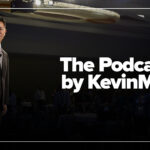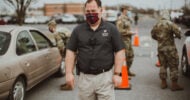Introduction
The medical profession is grappling with a crisis of profound proportions. Burnout now affects nearly half of all practicing physicians. This is not merely dissatisfaction—it is emotional and moral exhaustion that undermines both physician wellbeing and patient safety. At its core, burnout signals a loss of connection to purpose, to colleagues, and to the healing relationship that defines medical practice.
Burnout manifests as emotional depletion, depersonalization of patients, and a diminished sense of accomplishment. Unlike transient fatigue, it represents a systemic unraveling of the physician’s ability to provide compassionate and competent care. The implications are vast: early retirements, impaired clinical judgment, deteriorating health care outcomes, and a looming workforce shortage.
We must therefore confront this issue not only through individual coping strategies but through systemic reform, cultural change, and renewed moral clarity.
The weight of responsibility
Physicians are not only clinicians—they are often society’s last line of defense in illness and crisis. This moral weight brings with it extraordinary pressure. Daily life-and-death decisions made under uncertain conditions can exact a long-term psychological toll. Compounding this is a pervasive sense of guilt, even when outcomes were not preventable. This internalized responsibility—rooted in intellectual rigor and ethical commitment—can morph into chronic self-doubt.
Moral injury is increasingly recognized: The psychic trauma that arises when a physician is prevented from doing what they believe is right due to systemic constraints. When time, staffing, or policy prevents the delivery of ideal care, the physician suffers—not just ethically, but existentially.
Perfectionism, long seen as an asset in training, becomes corrosive when physicians cannot accept the limits of modern medicine. The stigma around admitting error fosters impostor syndrome, pushing physicians to mask their vulnerabilities.
The physical and cognitive toll
Modern schedules often violate human physiology. Shift work, extended call duties, and circadian disruption lead to chronic sleep deprivation—a condition shown to impair cognition and increase error rates. Sleep-deprived physicians function at levels comparable to legally intoxicated individuals.
Cognitive overload is also endemic. The promise of technology has often resulted in digital noise: fragmented EHRs, burdensome charting, and constant alerts. Clinical decision-making suffers from this informational clutter.
We must reclaim the doctor-patient relationship from technological distraction. Physicians often enter medicine to heal, not to document. When screens replace faces, the human soul of medicine withers.
Isolation and loss of community
The decline of collegial practice models has led to professional loneliness. Physicians report fewer opportunities for mentoring, shared reflection, and moral support. Administrative oversight often replaces peer guidance.
Moreover, the erosion of work-life boundaries leaves little space for recovery. On-call duties, ongoing educational demands, and the emotional residue of clinical work follow physicians into their personal lives. This continuous engagement strains relationships and drains joy.
Legal, financial, and systemic pressures
Fear of litigation fuels defensive medicine and anxiety. Specialties such as emergency medicine and obstetrics bear disproportionate risk. Simultaneously, economic pressures persist. Despite public perception, many physicians grapple with debt, malpractice premiums, and unpredictable income.
Value-based care models, while well-intentioned, often shift more responsibility onto physicians without clear increases in support. Many feel caught between patient advocacy and metric-driven oversight.
Administrative overload and regulatory complexity
Physicians are increasingly burdened by non-clinical tasks: authorizations, appeals, compliance, and reporting. For every hour of patient care, up to two hours are spent on documentation. This imbalance saps motivation and delays clinical innovation.
Furthermore, metrics intended to promote accountability may unintentionally compromise nuanced care. When performance is measured solely by quantifiable data, deeper human aspects—empathy, reassurance, shared decision-making—are sidelined.
Specialty-specific vulnerabilities
Each specialty carries its own weight. Emergency physicians face constant trauma and time scarcity. Primary care doctors navigate complex, socially entangled diseases in brief visits. Surgeons endure long procedures, high complication anxiety, and cultural pressure to suppress emotion.
Intensivists live amid death and high-stakes decisions, often navigating family distress and end-of-life ambiguity. Every domain requires tailored support.
The human cost
Burnout is not abstract. It presents as persistent fatigue, recurrent headaches, gastrointestinal distress, hypertension, and suppressed immunity. Psychologically, it erodes memory, attention, and decision-making.
Emotionally, it fosters despair. Isolation, absenteeism, and substance use rise. Tragically, suicide rates among physicians far exceed those of the general population—300 to 400 deaths annually in the U.S. alone.
These losses represent more than personal tragedies. They are a hemorrhage of wisdom, compassion, and experience from our health care system.
Building individual resilience
While systemic reform is essential, physicians also need tools for internal healing:
- Mindfulness and relaxation training enhance emotional regulation.
- Exercise improves sleep, mood, and stress management.
- Cognitive-behavioral strategies help challenge perfectionism and reframe setbacks.
- Narrative medicine and reflective writing reconnect physicians to the purpose that once ignited their vocation.
- Charity work and altruistic service remind us of our societal role beyond metrics. Giving reaffirms our humanity.
Resilience is not denial of difficulty—it is the ability to move through it with grace and authenticity.
Organizational responsibilities
Institutions must:
- Streamline EHRs and documentation.
- Create humane schedules with protected time off.
- Train leaders to foster psychological safety.
- Offer access to peer support and coaching.
- Measure physician wellbeing regularly.
Investment in wellbeing is not a cost—it is a protective factor for clinical quality, institutional loyalty, and ethical integrity.
Educational and policy reforms
Medical education must integrate emotional intelligence, stress management, and self-care as core competencies. Residency programs should balance clinical rigor with humane expectations.
Policy makers should promote:
- Reimbursement structures that value relational care.
- Reduced administrative burden.
- National wellness surveillance.
Conclusion: Restoring dignity and purpose
Burnout is a wound—but also a warning. It signals a profession at risk of losing its soul. Yet within this crisis lies an invitation: To redefine success, to restore community, and to elevate care beyond compliance.
We must be proud—not of our invulnerability, but of our shared humanity. Physicians are not machines. We are thinking, feeling, fallible human beings who have chosen one of the most sacred callings on Earth.
The healing of medicine begins with the healing of its healers. Let us meet this moment—with courage, compassion, and collective resolve.
Saad S. Alshohaib is a nephrologist in Saudi Arabia.






















![Why your migraine might be causing your tinnitus [PODCAST]](https://kevinmd.com/wp-content/uploads/Design-4-190x100.jpg)



![Preventing physician burnout before it begins in med school [PODCAST]](https://kevinmd.com/wp-content/uploads/The-Podcast-by-KevinMD-WideScreen-3000-px-4-190x100.jpg)
